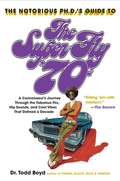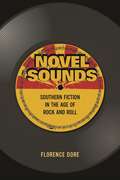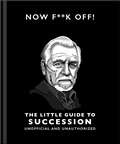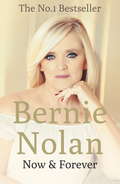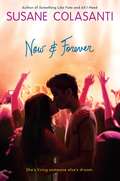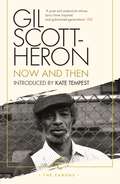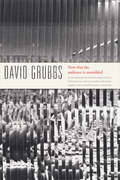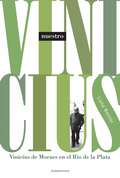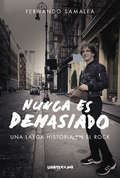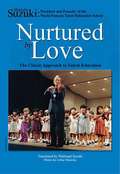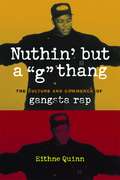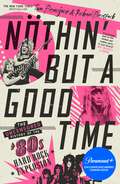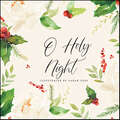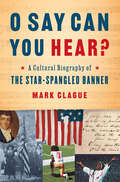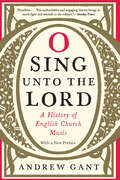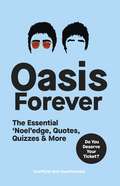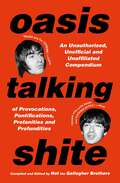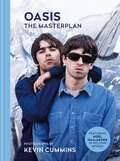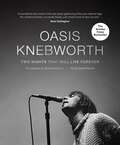- Table View
- List View
Notorious Phd's Guide to the Super Fly '70s: A Connoisseur's Journey Through the Fabulous Flix, Hip Sounds, and Cool Vibes That Defined a Decade
by Todd BoydTHIS RICHLY INFORMATIVE JOURNEY INTO THE 1970S CAPTURES THE EXPLOSIVE POWER OF THE BLACK PERFORMERS, MUSICIANS, FILMMAKERS, AND ATHLETES WHO IGNITED A CULTURAL REVOLUTION. WHAT SINGER/SONGWRITER WAS THE FIRST WHITE PERFORMER TO APPEAR ON SOUL TRAIN? WHAT PHILADELPHIA 76ER MADE NBA HISTORY WHEN, AGAINST THE KANSAS CITY KINGS, HIS TWO-HANDED DUNK SHATTERED THE BACKBOARD? WHAT ROCK-AND-ROLL STAR WOULD BEGIN HIS CAREER PLAYING GUITAR FOR ARTISTS LITTLE RICHARD AND THE ISLEY BROTHERS? Whether you're a '70s culture aficionado or these questions have you stumped, Todd Boyd's exciting look at one of the most influential periods in popular culture will be a fun and exciting roller-coaster ride that you won't want to miss. Dr. Boyd (known as "The Notorious Ph. D. ") delves into the personalities, passions, and politics that swept America and the world in the '70s and introduced a style and attitude that still reverberates today with the hip hop generation. From movies like Shaft, Super Fly, and Cleopatra Jones to Richard Pryor's edgy routines on race to the rise of Dr. J and other sports superstars, The Notorious Ph. D. 's Guide to the Super Fly '70s mixes social insight with an all-out celebration of the contributions of a wide variety of Black icons. Covering every aspect of Black culture from the period and including a quiz that you and your friends will love answering together, Dr. Boyd's hip writing style will educate while it entertains.
Novel Sounds: Southern Fiction in the Age of Rock and Roll
by Florence DoreThe 1950s witnessed both the birth of both rock and roll and the creation of Southern literature as we know it. Around the time that Chuck Berry and Elvis Presley put their electric spin on Southern vernacular ballads, a canonical group of white American authors native to rock’s birthplace began to write fiction about the electrification of those ballads, translating into literary form key cultural changes that gave rise to the infectious music coming out of their region. In Novel Sounds, Florence Dore tells the story of how these forms of expression became intertwined and shows how Southern writers turned to rock music and its technologies—tape, radio, vinyl—to develop the “rock novel.” Dore considers the work of Southern writers like William Faulkner, Flannery O’Connor, and William Styron alongside the music of Bessie Smith, Lead Belly, and Bob Dylan to uncover deep historical links between rock and Southern literature. Along with rock pioneers, Southern authors drew from blues, country, jazz, and other forms to create a new brand of realism that redefined the Southern vernacular as global, electric, and notably white. Resurrecting this Southern literary tradition at the birth of rock, Dore clarifies the surprising but unmistakable influence of rock and roll on the American novel. Along the way, she explains how literature came to resemble rock and roll, an anti-institutional art form if there ever was one, at the very moment academics claimed literature for the institution.
Now F**k Off!: The Little Guide to Succession
by Orange Hippo!In January 2024, Succession won four Golden Globes - including Best Drama - from a record 13 nominations, cementing the truth in stone: no other show since The Sopranos has come close to its influence, impact and intelligence. Fuelled by the uncertainty of the global pandemic and the ugly political aftermath of the 2016 and 2020 U.S. elections, Succession's premise is simple but devastating: rip a despicable yet powerful family apart using jaw-droppingly innovative and original one-liners, led by a wealth of top TV talent.The Little Guide to Succession is an essential and hilarious read for fans of the Roy family and the rest of the business class ensemble's infamous and now-iconic wicked wit and quickfire quips. All the best quotes here, ready to be deployed at your command from this compact celebration of Succession."You can't make a Tomlette without breaking some Gregs."Tom, to Greg (emailed to Greg 67 times in one evening), season two, episode nine, "DC"."You're a clumsy interloper, no one trusts you and the only guy pulling for you is dead. Now you're just married to the ex-boss's daughter and she doesn't even like you. You are fairly, squarely fucked."Karl, to Tom, when he "respectfully" threw his hat into the ring for interim CEO, season four, episode four, "Honeymoon States"."You look like a dildo dipped in beard trimmings."Roman, to designer-stubbled Stewy, season two, episode two, "Vaulter".3,021The number of times the word "fuck" is said throughout the show's four seasons. That's an average of 76 "fucks" per episode, or one every 1.2 minutes.
Now F**k Off!: The Little Guide to Succession
by Orange Hippo!In January 2024, Succession won four Golden Globes - including Best Drama - from a record 13 nominations, cementing the truth in stone: no other show since The Sopranos has come close to its influence, impact and intelligence. Fuelled by the uncertainty of the global pandemic and the ugly political aftermath of the 2016 and 2020 U.S. elections, Succession's premise is simple but devastating: rip a despicable yet powerful family apart using jaw-droppingly innovative and original one-liners, led by a wealth of top TV talent.The Little Guide to Succession is an essential and hilarious read for fans of the Roy family and the rest of the business class ensemble's infamous and now-iconic wicked wit and quickfire quips. All the best quotes here, ready to be deployed at your command from this compact celebration of Succession."You can't make a Tomlette without breaking some Gregs."Tom, to Greg (emailed to Greg 67 times in one evening), season two, episode nine, "DC"."You're a clumsy interloper, no one trusts you and the only guy pulling for you is dead. Now you're just married to the ex-boss's daughter and she doesn't even like you. You are fairly, squarely fucked."Karl, to Tom, when he "respectfully" threw his hat into the ring for interim CEO, season four, episode four, "Honeymoon States"."You look like a dildo dipped in beard trimmings."Roman, to designer-stubbled Stewy, season two, episode two, "Vaulter".3,021The number of times the word "fuck" is said throughout the show's four seasons. That's an average of 76 "fucks" per episode, or one every 1.2 minutes.
Now and Forever
by Bernie NolanTwo years ago Bernie Nolan was given the initial all-clear after a courageous battle with breast cancer. Over the moon, Bernie set about rebuilding her life and making plans for the future. Then in the summer of 2012, she was in her bedroom getting dressed when she found a lump just above her breast. Terrified, she immediately made a hospital appointment, where she was given the devastating news that the cancer had returned. It had spread to her brain, lungs, liver and bones and was incurable. Bernie's first thought was of her daughter. Erin had just turned thirteen and was approaching a time when young girls need their mums more than ever. In true Bernie spirit she vowed not to let the cancer stop her from being 'Mum'. Bernie always said that her family was her greatest achievement and she wanted to be the best wife and mother she could be in the time she had left. In this book Bernie shares her struggle to become a mother - the miscarriage she suffered and the heartbreaking stillbirth of her daughter Kate, and the joyous arrival of her beautiful daughter Erin. Bernie loved seeing this book published and was thrilled when it became a number 1 bestseller. It meant a great deal to her that so many people wanted to read her story. This is a memoir brimming with happy memories, and although Bernie tragically lost her battle on the 4th July 2013, she lives on in the hearts of the nation and in the pages of this book. Moving and wonderfully warm-hearted, this is a powerful story of a remarkable life and a mother's brave fight against a vicious disease.
Now and Forever
by Bernie NolanTwo years ago Bernie Nolan was given the initial all-clear after a courageous battle with breast cancer. Over the moon, Bernie set about rebuilding her life and making plans for the future. Then in the summer of 2012, she was in her bedroom getting dressed when she found a lump just above her breast. Terrified, she immediately made a hospital appointment, where she was given the devastating news that the cancer had returned. It had spread to her brain, lungs, liver and bones and was incurable. Bernie's first thought was of her daughter. Erin had just turned thirteen and was approaching a time when young girls need their mums more than ever. In true Bernie spirit she vowed not to let the cancer stop her from being 'Mum'. Bernie always said that her family was her greatest achievement and she wanted to be the best wife and mother she could be in the time she had left. In this book Bernie shares her struggle to become a mother - the miscarriage she suffered and the heartbreaking stillbirth of her daughter Kate, and the joyous arrival of her beautiful daughter Erin. Bernie loved seeing this book published and was thrilled when it became a number 1 bestseller. It meant a great deal to her that so many people wanted to read her story. This is a memoir brimming with happy memories, and although Bernie tragically lost her battle on the 4th July 2013, she lives on in the hearts of the nation and in the pages of this book. Moving and wonderfully warm-hearted, this is a powerful story of a remarkable life and a mother's brave fight against a vicious disease.
Now and Forever
by Susane ColasantiWhat if your boyfriend was the world's biggest rockstar? Sterling is crazy in love with Ethan. Not only is he the sweetest boy she's ever met, but he's an incredibly talented guitarist, singer, and songwriter. And since forever, he's believed he has what it takes to be a star. When Ethan becomes an overnight sensation, he's thrown head-first into the glam world of celebrity--and so is Sterling. Before she knows it, she's attending red-carpet premieres, getting free designer clothes, and flying around the country to attend Ethan's monumental sold-out concerts. It's a dream come true...but whose dream is Sterling living? And what do you do when "forever" comes to an end?
Now and Then: The Poems Of Gil Scott-heron (Canons #101)
by Gil Scott-HeronA wide-ranging collection of poetry by the iconic &“poet and polemicist whose lyrics have inspired and galvanized generations&” (GQ). Musician, poet, and spoken-word artist Gil Scott-Heron influenced generations of artists with his highly original, disarmingly witty, politically provocative song-poems. Coming into prominence in the early 1970s, the self-proclaimed &“bluesologist&” has earned, among many other accolades, the title of Godfather of Rap. Now and Then presents a collection of poems from across Scott-Heron long career—including some of his most iconic recorded pieces, as well as lesser-known works that have never been recorded. With an introduction by Kate Tempest, this collection carries the reader from the global topics of political hypocrisy and the dangers posed by capitalist culture to painfully personal themes and the realities of everyday life. Through it all, Scott-Heron&’s message is both steeped in history and as urgent as ever.&“Scott-Heron is such a fine writer…the least likely pop star ever, one with a truly brilliant mind&”—Sunday Times, UK &“Some of the funniest and most literate lyrics in all music . . . From deadpan attacks on racism to withering sarcasm about the Great Society; from Chomskian rants to parodies of media shallowness—every line comes coated in a sardonically witty turn of phrase.&”—Time Out
Now that the audience is assembled
by David GrubbsFollowing his investigation into experimental music and sound recording in Records Ruin the Landscape, David Grubbs turns his attention to the live performance of improvised music with an altogether different form of writing. Now that the audience is assembled is a book-length prose poem that describes a fictional musical performance during which an unnamed musician improvises the construction of a series of invented instruments before an audience that is alternately contemplative, participatory, disputatious, and asleep. Over the course of this phantasmagorical all-night concert, repeated interruptions take the form of in-depth discussions and musical demonstrations. Both a work of literature and a study of music, Now that the audience is assembled explores the categories of improvised music, solo performance, text scores, instrument building, aesthetic deskilling and reskilling, and the odd fate of the composer in experimental music.
Nuestro Vinicius: Vinicius de Moraes en el Río de la Plata
by Liana WennerEsta biografía recorre los momentos menos conocidos de la vida delbrasileño nómade que interpretó la bossa nova no solo como un géneromusical, sino como una actitud ante la vida. «Nuestro Vinicius» es un exquisito perfil coral del último Vinicius. Elpoeta y músico genial que eligió las calles porteñas y uruguayas tras elexilio, para difundir su arte y pasarla bien con amigos. Noctámbulo,bohemio, gran bebedor de whisky, padre ausente, mujeriego y excéntrico,Vinicius le cantó #como dice Liana Wenner- a la libertad individual, laalegría, la sofisticación y la promesa de la realización de lasfantasías sexuales.
Nunca dejes de sonreír: Los sueños de una muser (Lola Lolita #Volumen 3)
by Lola MorenoLola Lolita, ¡la tercera aventura de la estrella de Tik Tok! Nunca dejes de sonreír con @lolaloliitaaa Hay una pequeña cosita inevitable que siempre hay que sufrir antes de poder irte vacaciones... ¡los exámenes de final de curso! ¡Glups! Y en el caso de Lola este año no eran lo que se dice unos exámenes normalitos, si no la temible selectividad. ¡Doble glups! Sumergida entre apuntes, Lola no paraba de pensar en todas las cosas guays que haría durante las vacaciones: tomar el sol, navegar en barquito, hacer paddle surf… Y por fin llegó el día. Carla, Ana, Lucia y ella estaban ready para pasar el mejor verano de su vida. ¡No tenían ni idea de que aquellas vacaciones serían mucho más moviditas de lo que jamás habrían imaginado!¡Menudas vacaciones más top! {Nunca dejes de sonreír con @lolaloliitaaa}
Nunca dejes de soñar: La historia de una muser (Lola Lolita #Volumen 2)
by Lola MorenoLola Lolita, ¡las aventuras de la estrella de Musical·ly! Nunca dejes de soñar con @lolaloliitaaa Hoy empieza un nuevo curso y Lola se muere de ganas por reencontrarse con los Tumblr, ¡su grupito de baile! Este año lo van a hacer todavía mejor, todos tienen un montón de ideas para organizar un espectáculo increíble. Lo que no se esperan es lo que va a suceder... Valeria, la nueva compañera del insti, se va a convertir en su máxima rival. Resulta que Valeria baila desde pequeña y está montando un baile para competir con Lolita y su grupo... ¡la disputa entre musers está asegurada! ¿Quién será la más votada?
Nunca es demasiado: Una larga historia en el rock
by Fernando SamaleaCierre de la trilogía autobiográfica del mayor baterista argentino de rock, que abarca el período 2010-2017: de Charly & The Prostitution, las giras, el Colón y su disco Random a los conciertos europeos con el francés Benjamin Biolay. Dear Fernando, qué bueno tener este libro con nuevas y divertidas aventuras. Hemos compartido muchas de ellas. Los libros y la música nos juntaron siempre... ¡Me faltaría subir a tu moto!Renata Schussheim Siempre hay un soldado, un jugador, que se especializa en proveer el clima ideal para la aventura. Que sabe vehicular y contagiar la energía necesaria para una celebración. Esta es una de las mayores virtudes de Fernando. Virtud que solo puede poseer una sensibilidad distinta como la suya.Ramón Ortega «Después de la tempestad viene... otra tempestad», dice Fernando Samalea al empezar este recorrido por sus vivencias más recientes. Amigos, conciertos, viajes, amores, paisajes, en estas páginas todo transcurre con la naturalidad de lo extraordinario. Samalea salta desde el Colón con Charly hasta el barcito de provincia con músicos veinteañeros; va de Nueva York a París, de Arequipa a Kioto; cambia el altillo de Constitución por el Barco de Villa Ortúzar. Abandona, durante un tiempo, ómnibus y aviones para subir a su querida Idílica y conquistar en dos ruedas casi toda Sudamérica. No conforme con la percusión y el fueye, con The Prostitution, la Orquesta Hypnofón y el Sexteto Irreal, también es bartender. Y como si ser Samalea no fuera suficiente, algunos lo llaman Palito y otros le piden autógrafos de Julio Bocca. Nunca es demasiado.
Nurtured by Love: The Classic Approach to Talent Education, 2nd Edition
by Shinichi Suzuki Waltraud SuzukiThis is typically required reading for parents of children studying music via the Suzuki Method. It discusses Suzuki's philosophy of talent education and methods for raising a musical child with good character.
Nuthin' but a "G" Thang: The Culture and Commerce of Gangsta Rap (Popular Cultures, Everyday Lives)
by Eithne QuinnIn the late 1980s, gangsta rap music emerged in urban America, giving voice to—and making money for—a social group widely considered to be in crisis: young, poor, black men. From its local origins, gangsta rap went on to flood the mainstream, generating enormous popularity and profits. Yet the highly charged lyrics, public battles, and hard, fast lifestyles that characterize the genre have incited the anger of many public figures and proponents of "family values." Constantly engaging questions of black identity and race relations, poverty and wealth, gangsta rap represents one of the most profound influences on pop culture in the last thirty years.Focusing on the artists Ice Cube, Dr. Dre, the Geto Boys, Snoop Dogg, and Tupac Shakur, Quinn explores the origins, development, and immense appeal of gangsta rap. Including detailed readings in urban geography, neoconservative politics, subcultural formations, black cultural debates, and music industry conditions, this book explains how and why this music genre emerged. In Nuthin'but a "G" Thang, Quinn argues that gangsta rap both reflected and reinforced the decline in black protest culture and the great rise in individualist and entrepreneurial thinking that took place in the U.S. after the 1970s. Uncovering gangsta rap's deep roots in black working-class expressive culture, she stresses the music's aesthetic pleasures and complexities that have often been ignored in critical accounts.
Nöthin' But a Good Time: The Uncensored History of the '80s Hard Rock Explosion
by Tom Beaujour Richard BienstockNow streaming on Paramount+ as an exclusive docuseries!The New York Times BestsellerThe Explosive National Bestseller"A backstage pass to the wildest and loudest party in rock history—you'll feel like you were right there with us!" —Bret Michaels of PoisonNothin' But a Good Time is the definitive, no-holds-barred oral history of 1980s hard rock and hair metal, told by the musicians and industry insiders who lived it. Hard rock in the 1980s was a hedonistic and often intensely creative wellspring of escapism that perfectly encapsulated—and maybe even helped to define—a spectacularly over-the-top decade. Indeed, fist-pumping hits like Twisted Sister’s “We’re Not Gonna Take It,” Mötley Crüe’s “Girls, Girls, Girls,” and Guns N’ Roses’ “Welcome to the Jungle” are as inextricably linked to the era as Reaganomics, PAC-MAN, and E.T.From the do-or-die early days of self-financed recordings and D.I.Y. concert productions that were as flashy as they were foolhardy, to the multi-Platinum, MTV-powered glory years of stadium-shaking anthems and chart-topping power ballads, to the ultimate crash when grunge bands like Nirvana forever altered the entire climate of the business, Tom Beaujour and Richard Bienstock's Nothin' But a Good Time captures the energy and excess of the hair metal years in the words of the musicians, managers, producers, engineers, label executives, publicists, stylists, costume designers, photographers, journalists, magazine publishers, video directors, club bookers, roadies, groupies, and hangers-on who lived it. Featuring an impassioned foreword by Slipknot and Stone Sour vocalist and avowed glam metal fanatic Corey Taylor, and drawn from over two hundred author interviews with members of Van Halen, Mötley Crüe, Poison, Guns N’ Roses, Skid Row, Bon Jovi, Ratt, Twisted Sister, Winger, Warrant, Cinderella, Quiet Riot and others, as well as Ozzy Osbourne, Lita Ford, and many more, this is the ultimate, uncensored, and often unhinged, chronicle of a time where excess and success walked hand in hand, told by the men and women who created a sound and style that came to define a musical era—one in which the bands and their fans went looking for nothin’ but a good time…and found it.
O Holy Night
by Sarah CraySpread a little Yuletide cheer with Sarah Cray’s fourth book, O Holy Night. Beautiful watercolor, gouache, and ink illustrations are paired with beloved Christmas carols in this elegant hardbound volume. Allow it to serve as a charming host gift, a personal songbook, or to complement your holiday decor. The featured carols include lyrics from select stanzas of O Holy Night, Silent Night, O Little Town of Bethlehem, Hark the Herald Angels Sing, and Joy to the World—classic hymns to bring you right back to cherished moments of Christmas from years past, and to build fond new memories for Christmases yet to come.
O Let Us Howle Some Heavy Note: Music for Witches, the Melancholic, and the Mad on the Seventeenth-Century English Stage
by Amanda Eubanks WinklerIn the 17th century, harmonious sounds were thought to represent the well-ordered body of the obedient subject, and, by extension, the well-ordered state; conversely, discordant, unpleasant music represented both those who caused disorder (murderers, drunkards, witches, traitors) and those who suffered from bodily disorders (melancholics, madmen, and madwomen). While these theoretical correspondences seem straightforward, in theatrical practice the musical portrayals of disorderly characters were multivalent and often ambiguous.O Let Us Howle Some Heavy Note focuses on the various ways that theatrical music represented disorderly subjects--those who presented either a direct or metaphorical threat to the health of the English kingdom in 17th-century England. Using theater music to examine narratives of social history, Winkler demonstrates how music reinscribed and often resisted conservative, political, religious, gender, and social ideologies.
O Say Can You Hear?: A Cultural Biography Of The Star-spangled Banner
by Mark ClagueThe fascinating story of America’s national anthem and an examination of its powerful meaning today. Most Americans learn the tale in elementary school: During the War of 1812, Francis Scott Key witnessed the daylong bombardment of Baltimore’s Fort McHenry by British navy ships; seeing the Stars and Stripes still flying proudly at first light, he was inspired to pen his famous lyric. What Americans don’t know is the story of how this everyday “broadside ballad,” one of thousands of such topical songs that captured the events and emotions of early American life, rose to become the nation’s one and only anthem and today’s magnet for controversy. In O Say Can You Hear? Mark Clague brilliantly weaves together the stories of the song and the nation it represents. Examining the origins of both text and music, alternate lyrics and translations, and the song’s use in sports, at times of war, and for political protest, he argues that the anthem’s meaning reflects—and is reflected by—the nation’s quest to become a more perfect union. From victory song to hymn of sacrifice and vehicle for protest, the story of Key’s song is the story of America itself. Each chapter in the book explores a different facet of the anthem’s story. In one, we learn the real history behind the singing of the anthem at sporting events; in another, Clague explores Key’s complicated relationship with slavery and its repercussions today. An entire is chapter devoted to some of the most famous performances of the anthem, from Jimi Hendrix at Woodstock to Roseanne Barr at a baseball game to the iconic Whitney Houston version from the 1991 Super Bowl. At every turn, the book goes beyond the events to explore the song’s resonance and meaning. From its first lines Key’s lyric poses questions: “O say can you see?” “Does that banner yet wave?” Likewise, Clague’s O Say Can You Hear? raises important questions about the banner; what it meant in 1814, what it means to us today, and why it matters.
O Sing unto the Lord: A History of English Church Music
by Andrew GantThis history of English church music is “one of the wittiest and most whimsically irreverent works of scholarship in recent memory” (The Christian Century).For as long as people have worshipped together, music has played a key role in church life. Here, Andrew Gant offers a fascinating history of English church music, from the Latin chant of late antiquity to the great proliferation of styles seen in contemporary repertoires.The ornate complexity of pre-Reformation Catholic liturgies revealed the exclusive nature of this form of worship. By contrast, simple English psalms, set to well-known folk songs, summed up the aims of the Reformation with its music for everyone. The Enlightenment brought hymns, the Methodists and Victorians a new delight in the beauty and emotion of worship. Today, church music mirrors our multifaceted worldview, embracing the sounds of pop and jazz along with the more traditional music of choir and organ. And reflecting its truly global reach, the influence of English church music can be found in everything from masses sung in Korean to American Sacred Harp singing.From medieval chorales to “Amazing Grace,” West Gallery music to Christmas carols, English church music has broken through the boundaries of time, place, and denomination to remain familiar and cherished everywhere. O Sing unto the Lord is the biography of a tradition, a book that “celebrates the sheer pleasure of raising a joyful sound to the Lord” (The Guardian).“What, fundamentally, is the function of church music, and why have clerical authorities often been suspicious of how much attention music receives? Gant engages these questions in intelligent, energetic prose.” —Publishers Weekly“Excellent . . . this authoritative and engaging history brings so much light and warmth to the subject.” —Sunday Times“The beauty of relating Christian history this way is that it broadens the focus to include the listening laity, not just the clergy or the church establishment.” —Foreword Reviews
Oasis Forever: The Essential ‘Noel’edge, Quotes, Quizzes & More
by Pop PressThe ultimate Christmas gift for this 'Noël'!Show your loyalty to the ultimate Rock ’n’ Roll Stars with this Supersonic celebration of the Gallagher brothers. Featuring Liam and Noel’s most outrageous quotes and the quizzes and questions you need to prove you deserve to be at the concerts more than anyone else, this is the ultimate celebration of the band that defined an era.Learn:Where Oasis recorded their iconic first albumWhat Noel said about Liam after the band broke up in 2009Which Oasis song is Liam’s favouriteAnd more…
Oasis Talking Shite
by Not the Gallagher BrothersA hilarious unofficial tribute to the most opinionated and entertainingly cantankerous band in rock and roll history.Hello and listen up. In 1994, with the shock of the lightning that was Oasis&’s force-of-nature debut album, the British band&’s cigarettes-and-alcohol-fueled founding brothers Liam and Noel Gallagher went supernova all around the world. Most artists would have responded to this fame by opting to cast no shadow, saying less in public, or at least being more cautious when they did, reluctant to add to the weight of the world on their shoulders. Not Liam and Noel, who did a strange thing. As if born on a different cloud, they refused to be quiet ones and acquiesce to the typical masterplan for celebrity. For the next thirty years, they never stopped opening their big mouths and shouting out loud their opinions on everything underneath the sky. Whether as stormy as a cloudburst, as playful as a shakermaker, as wise as a headshrinker in a rockin&’ chair, as uncouth as a girl in a dirty shirt with mucky fingers, or as lewd as fuckin&’ in the bushes, their heathen chemistry was always electric—some might say as addictive as morning glory. Oasis Talking Shite celebrates these songbirds&’ refreshing candor, constructing a magic pie of memorable quotes and photographs into a wall of wonder. Here they go let it out on nearly every topic imaginable, including religion, politics, technology, sports, aging, America, aliens, the Big Bang Theory, open-toed shoes, Christmas, SpongeBob SquarePants, other bands, and of course their all-time favorite subject: each other. Timed to the long-awaited Oasis reunion tour in summer 2025, in which they are keeping the dream alive despite just getting older, this book will help you stop crying your eyes out if you didn&’t get tickets. In fact, it&’s an eyeball tickler. D&’you know what I mean? It&’s something to read while waiting for the rapture. It won&’t let you down and gives you something about which to talk tonight or on a Sunday morning call—an opportunity to look back in appreciation (not anger) as well as a reminder of why Liam and Noel will never slide away and definitely (not maybe) live forever as two of the most supersonic rock &‘n&’ roll stars to ever turn up the sun. So put yer money where yer mouth is, bring it on down to the bookstore register, and bag it up.
Oasis The Masterplan: Photographs by Kevin Cummins, featuring Noel Gallagher in his own words
by Kevin Cummins'This book really brings those early years back to me. Kevin's photographs captured us at the very beginning. This is a must-have book for every Oasis fan.' Noel Gallagher'As iconic photographer, adventurous fan and inside eye-witness, Kevin Cummins has always been where the cultural action is.' Paul Morley"Cummins, typical Manc, combining art with a good time, a sense of beauty, which explains the iconic shots of Liam and Noel in Man City shirts: memorable, defining images." - Miranda Sawyer, Observer'No one has captured the look of alternative UK music over the past half a century more tellingly than Kevin Cummins.' Simon Armitage***How does a band come into being? What are the myriad forces that shape their sound, look and identity? In 1993, Oasis signed to Creation Records and were shortly to begin recording their first album. The following year began with a masterplan - the creation of Oasis. At the centre of this enterprise was celebrated photographer Kevin Cummins, brought on board to help the band find a look that fitted their sound. In Oasis: The Masterplan we follow Cummins as he photographs the band as they cement their identity.Noel Gallagher's thoughts on football, fashion and music and his recollections of that formative year sit alongside those of Cummins himself. Throughout, we see how Oasis played with fashion and were taught how to pose and present themselves as they approached the summer when their first album, Definitely Maybe was released. The story from that moment on is well-known. Featuring 75% previously unseen images the book reveals just how effective the masterplan was to get them to that point.
Oasis: THE SUNDAY TIMES BESTSELLER Two Nights That Will Live Forever
by Daniel Rachel Jill Furmanovsky***'A wonderful document of the last great gathering of the pre-internet age. No camera phones, no social media, just a band and its fans as one' -NOEL GALLAGHER On 10th and 11th August 1996, Oasis played the concerts that would define them, a band at the height of their powers playing to over 250,000 people.Twenty-five years on, this is the inside story of those nights, told through the breathtaking photographs of Jill Furmanovsky, granted unprecedented access to Oasis throughout that summer. Also includes newly obtained first-hand accounts from the people who were there - including Noel Gallagher and Alan McGee - in text by award-winning author Daniel Rachel. From relaxed rehearsals and warm-up concerts to Knebworth itself - backstage, onstage, flying high above the site - many of the stunning photographs in this book have never been seen anywhere before.This the definitive account of two nights that a generation will never forget.
Oasis: THE SUNDAY TIMES BESTSELLER Two Nights That Will Live Forever
by Daniel Rachel Jill Furmanovsky***'A wonderful document of the last great gathering of the pre-internet age. No camera phones, no social media, just a band and its fans as one' -NOEL GALLAGHER "STUNNING... The iconic images by Furmanovsky capture the glorious madness of it all."- ROLLING STONE MAGAZINE"Furmanovsky was a favourite of Oasis and given complete access at the event."-THE TELEGRAPHA ROUGH TRADE BOOK OF THE YEAROn 10th and 11th August 1996, Oasis played the concerts that would define them, a band at the height of their powers playing to over 250,000 people.Twenty-five years on, this is the inside story of those nights, told through the breathtaking photographs of Jill Furmanovsky, granted unprecedented access to Oasis throughout that summer. Also includes newly obtained first-hand accounts from the people who were there - including Noel Gallagher and Alan McGee - in text by award-winning author Daniel Rachel.From relaxed rehearsals and warm-up concerts to Knebworth itself - backstage, onstage, flying high above the site - many of the stunning photographs in this book have never been seen anywhere before.This the definitive account of two nights that a generation will never forget.
